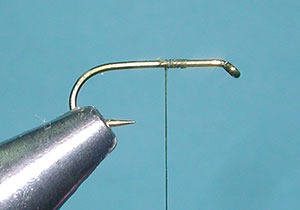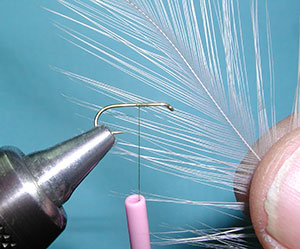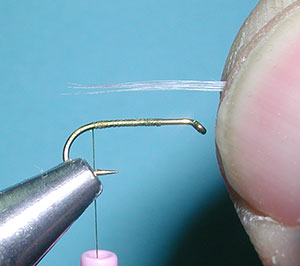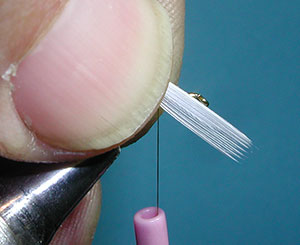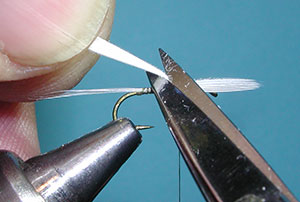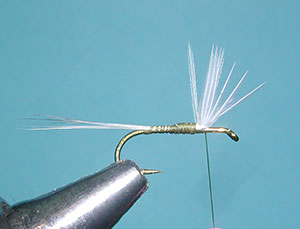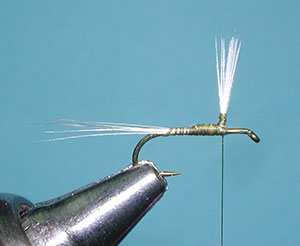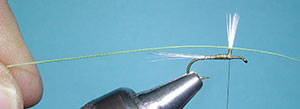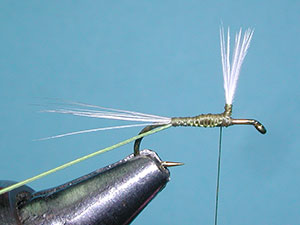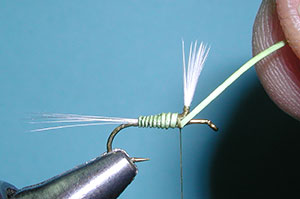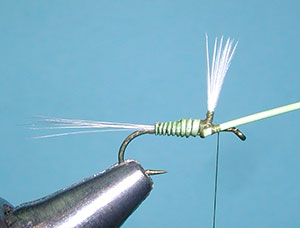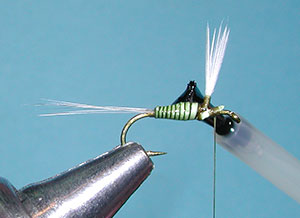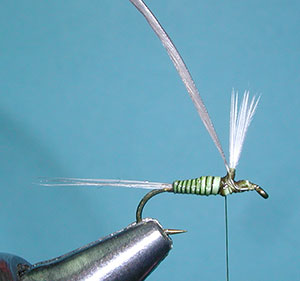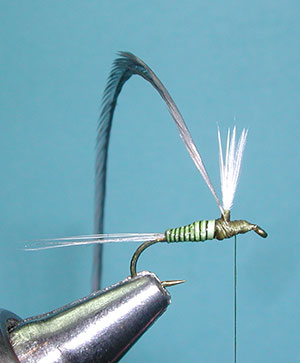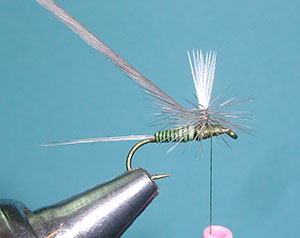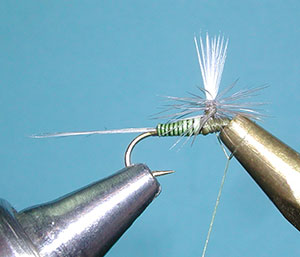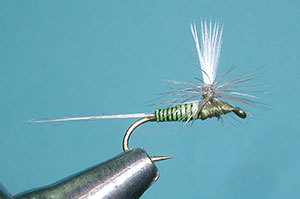California Mosquito – a proven timeless treasure
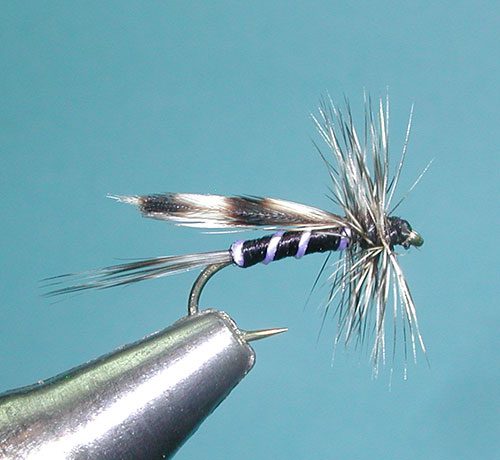
California Mosquito
Tying Instructions
| Materials
to Order Material, click the link |
|
|---|---|
| Hook | TMC 100 #12-20 |
| Thread | Veevus 8/0 Black |
| Body | Uni-Floss Black |
| Ribbing | Uni-Floss White |
| Tail | Grizzly Spade hackle fibers |
| Wing | Grizzly Saddle hackle tips |
| Hackle | Grizzly hackle |
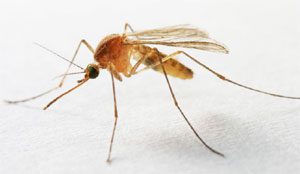
California Mosquito
The California Mosquito pattern goes back to sometime within the 1950’s. During the ’60’s and 70’s, this pattern was one of the most popular dry flies within the Sierra Nevada. The pattern even became a popular graying fly within Alaska. The downwing makes this pattern unique. Mosquitos are known for raising their hind legs in the air when they alight onto the surface film of the water. This brings their body into close proximity to their wings. The pattern is still a producer, particularly within the high elevation lakes and meadow streams.
Often, you will find mosquito clusters beneath overhanging branches and next to brushy shorelines. Cast the California Mosquito upstream of the overhangs and let the current bring the fly into the fish zone. It is important that you choose the size of fly that mimics the actual mosquito. If the pattern is larger than the naturals, the trout will ignore the presentation. At times, fish will be keying on subsurface pupa emergers, especially during the evening. If you find that they are not taking the dry, you can modify this fly into a pupa emerger by trimming the hackle so that the fly lies lower within the surface film.
Ray Bergman

Ray Bergman
The California Mosquito is a variation of a much older Catskill pattern, theMosquito, with upright split wings. Winnie and Walt Dette tied a similar pattern usingthe “stripped center quill stem from grizzly hackle” in 1928 and Ray Bergman wrote about the Mosquito fly in his 1938 book, “Trout”, with a plate illustration utilizing stripped peacock herl for the body. Obviously, the pattern had a Catskill history with no known originator.
The California Mosquito made it’s debut in the 1950’s and Randall Kaufmann popularized the pattern within his book, “Tying Dry Flies” (1991). This pattern may imitate not only mosquitos but Callibaetis, midges, and gnats.
Variations
TheRed Tail Mosquitois an important variation of this fly. The red butt has been an attractor on many flies and it’s properties work particularly well on this pattern with the split wing placed to the rear of the hackle wraps in a downwing profile.
Another variation of the Mosquito is theLake Mary Mosquito, out of Mammoth Lakes, which has no wing but heavily hackled. The body is simply a threaded body coated with a layer of Sally’s Hard as Nails.
TheWingless Mosquito rely only on the hackle to represent wings, perfect for those really small gnats and midges.
Variations
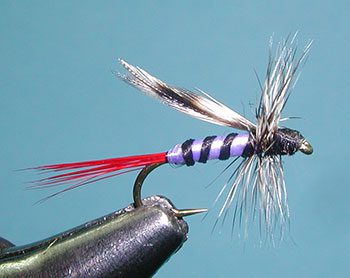
Red Tail Mosquito
| Hook | TMC 100 #12-18 |
| Thread | Veevus 8/0 Black |
| Body | Uni-Floss White |
| Head | Veevus 8/0 Black |
| Ribbing | Black Superfine |
| Tail | Red Spade Hackle Fibers |
| Wing | Grizzly Saddle Hackle Tips |
| Hackle | Grizzly Hackle |
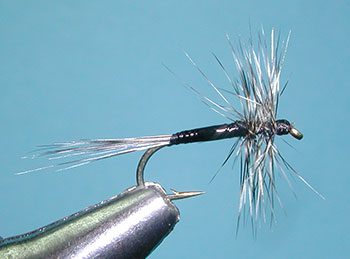
Lake Mary Mosquito
| Hook | TMC 100 #12-18 |
| Thread | Veevus 8/0 Black |
| Body | Veevus 12/0 Black, coated with Loons UV Fly Finish, Flow“] |
| Head | Veevus 8/0 Black |
| Tail | Grizzly Spade hackle fibers |
| Hackle | Grizzly Hackle |
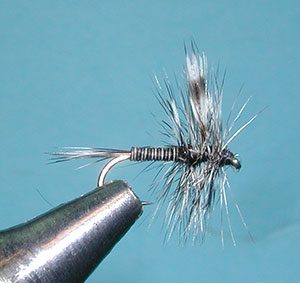
Mosquito
| Hook | TMC 100 #12-20 |
| Thread | Veevus 8/0 Black |
| Body | Stripped Grizzly Hackle quill |
| Head | Veevus 8/0 Black |
| Tail | Grizzly Spade hackle fibers |
| Wing | Grizzly Saddle Hackle Tips |
| Hackle | Grizzly Hackle |
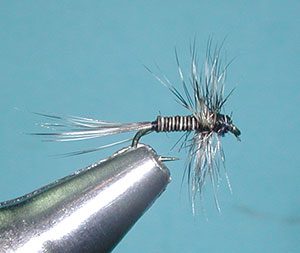
Wingless Mosquito
| Hook | TMC 100, sizes 20-24 |
| Thread | Veevus 12/0 Black |
| Body | Stripped Grizzly Hackle quill |
| Head | Veevus 12/0 Black |
| Tail | Grizzly Spade hackle fibers |
| Hackle | Grizzly Hackle |

